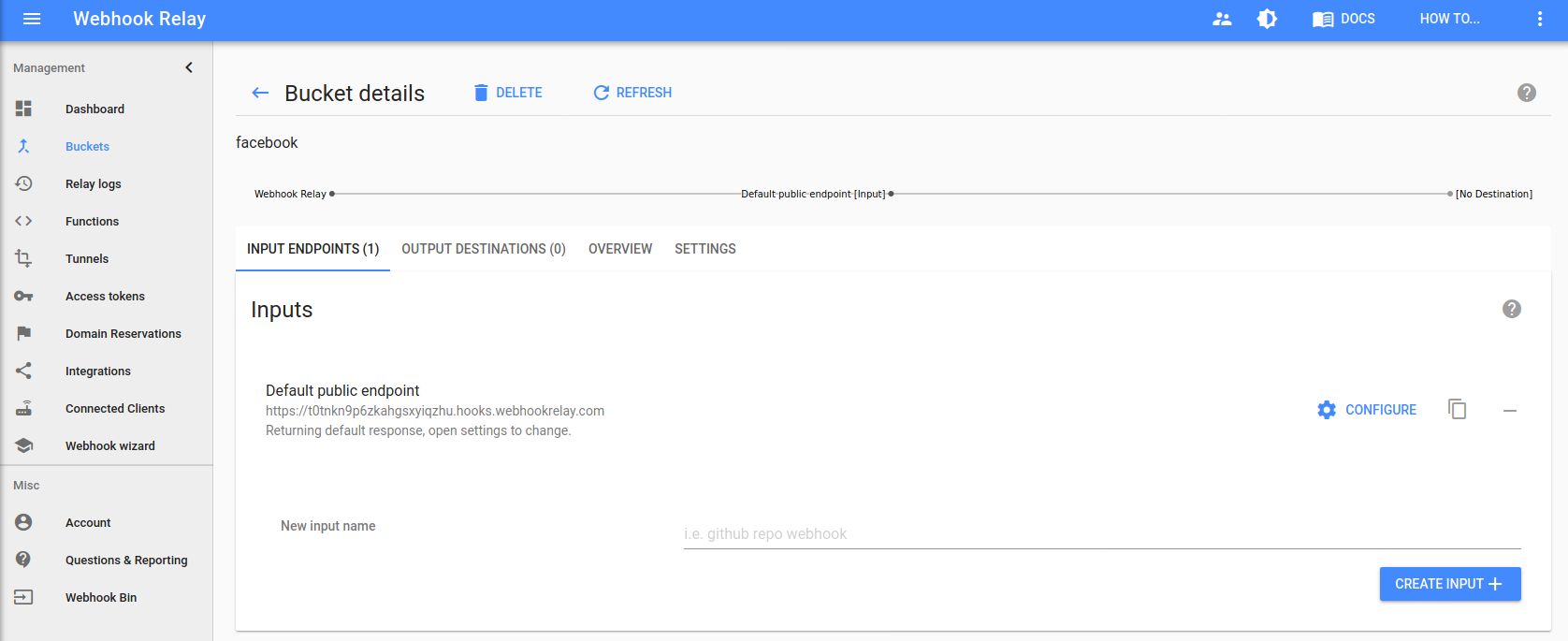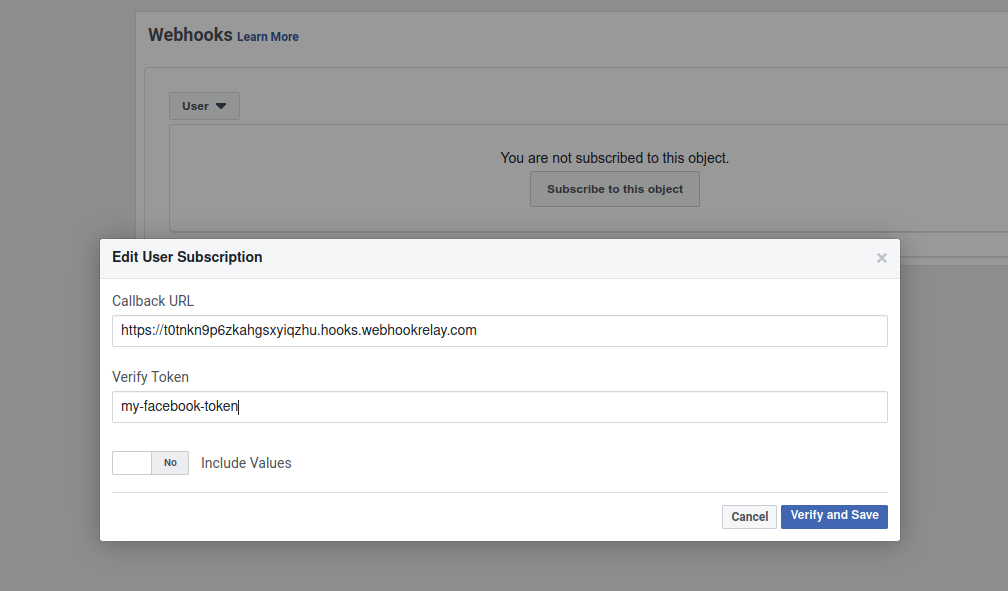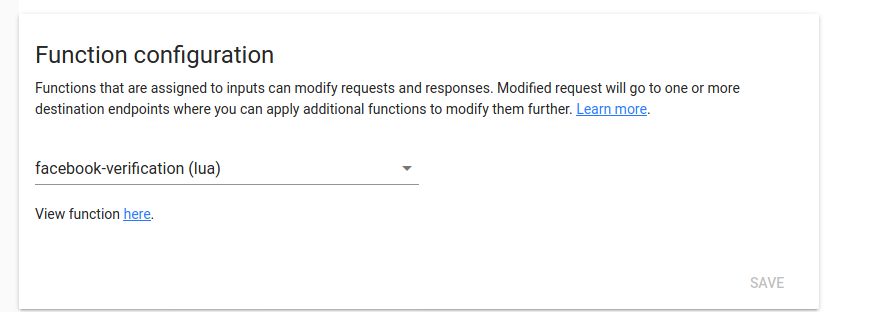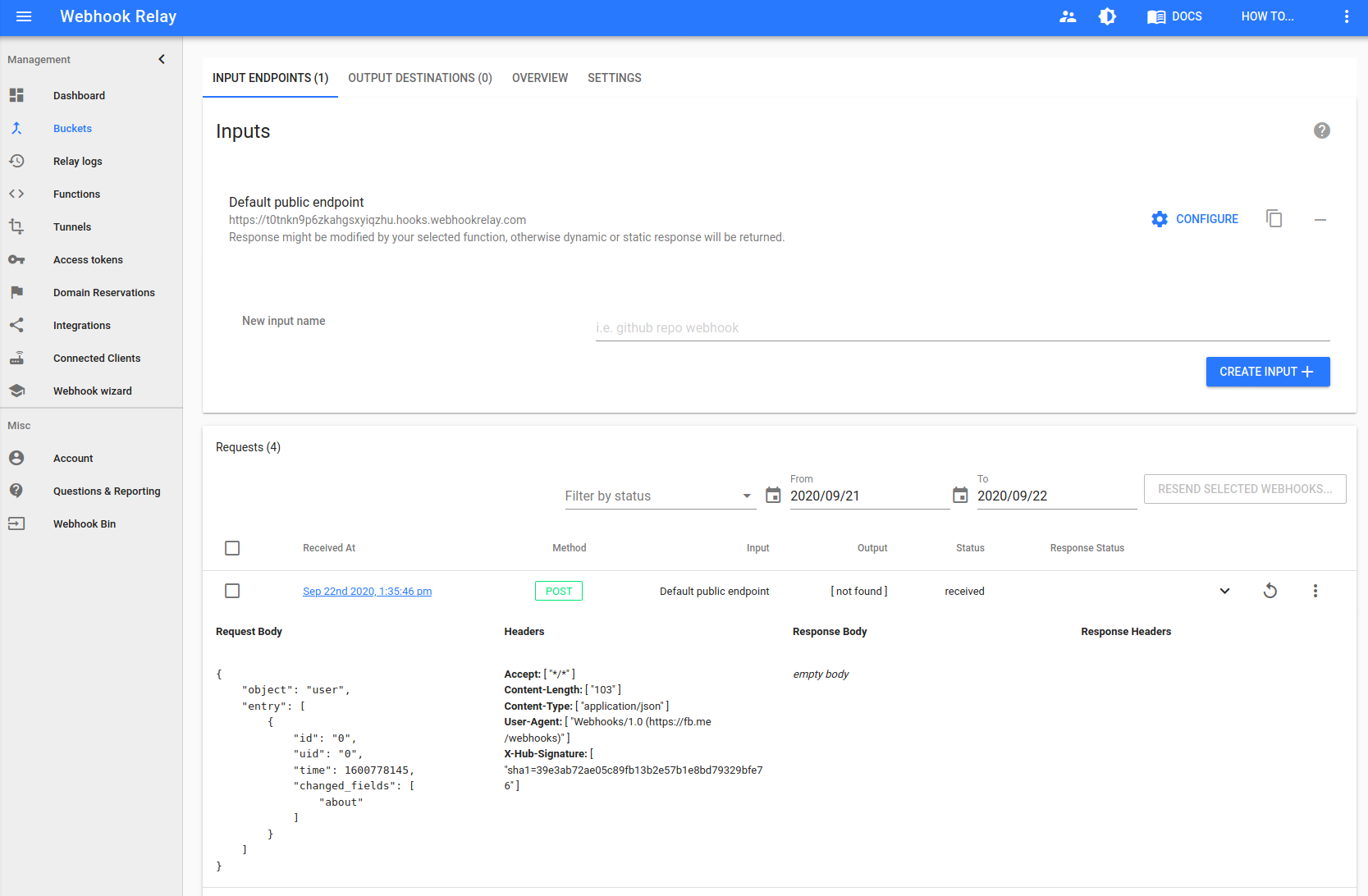Ingesting Facebook webhooks (challenge & verification)
How to receive Facebook webhooks and do verification for challenge and token
Facebook lets you receive information about various events via webhooks. Documentation can be found here https://developers.facebook.com/docs/messenger-platform/getting-started/webhook-setup/. These webhooks are almost like any other webhooks except they also ask you to do the verification of the token (similarly to shared secret and HMAC in other platforms) but the slight difference comes when dealing with the challenge.
In this short tutorial, I will demonstrate how to configure Facebook webhooks so Webhook Relay will solve the challenge for you.

You can read more about the Messenger Platform here: https://developers.facebook.com/docs/messenger-platform/introduction.
Create a bucket in Webhook Relay
First, create a new Webhook Relay bucket. You can do that by visiting buckets page.

Here, you will see your "Default public endpoint" that should look like <random letters>.hooks.webhookrelay.com.
Configure webhooks endpoint on Facebook

Click on subscribe and then add your Webhook Relay public endpoint:

If you click on "Verify and Save" it will show you an error and looking at the request in the Webhook Relay dashboard, we can see that the query had several values Query: hub.mode=subscribe&hub.challenge=1903260781&hub.verify_token=my-facebook-token .
We need to take the challenge and set it as a header.
Solving the Facebook webhook verification challenge
The way to solve the Facebook verification challenge is to get the value from the URL query and set it to the response body. This can be achieved with the Webhook Relay Function.
Go to Functions page https://my.webhookrelay.com/functions and create a new function called "facebook-verification".
Copy paste the code below:
local mode = r.RequestQuery["hub.mode"]
if mode == "subscribe" then
r:SetResponseBody(r.RequestQuery["hub.challenge"])
end
Now, go back to the bucket that you have previously created, click on the Inputs and then "CONFIGURE" on your input:

Now, if you try "Save and Verify" again from the Facebook webhooks page, it should pass.
You can now try sending some "test" events from the platform:

Facebook webhook token authentication
Facebook also sends a token that you have supplied when adding configuration. In my example, it was my-facebook-token. We can get this value too and verify in the Function:
local mode = r.RequestQuery["hub.mode"]
-- Shared secret - replace with yours!!
local my_shared_secret = "my-facebook-token"
-- If mode is subscribe, validating it
if (mode == "subscribe") then
-- Getting verify token
local token = r.RequestQuery["hub.verify_token"]
-- Validating token
if not(token == my_shared_secret) then
r:SetResponseStatusCode(401)
r:StopForwarding()
return
end
-- Responding to challenge
r:SetResponseBody(r.RequestQuery["hub.challenge"])
end
Update the function, remove Facebook subscription and then try again.
That's it, you can now configure destinations either to your public or private application servers and start processing Facebook webhooks.

